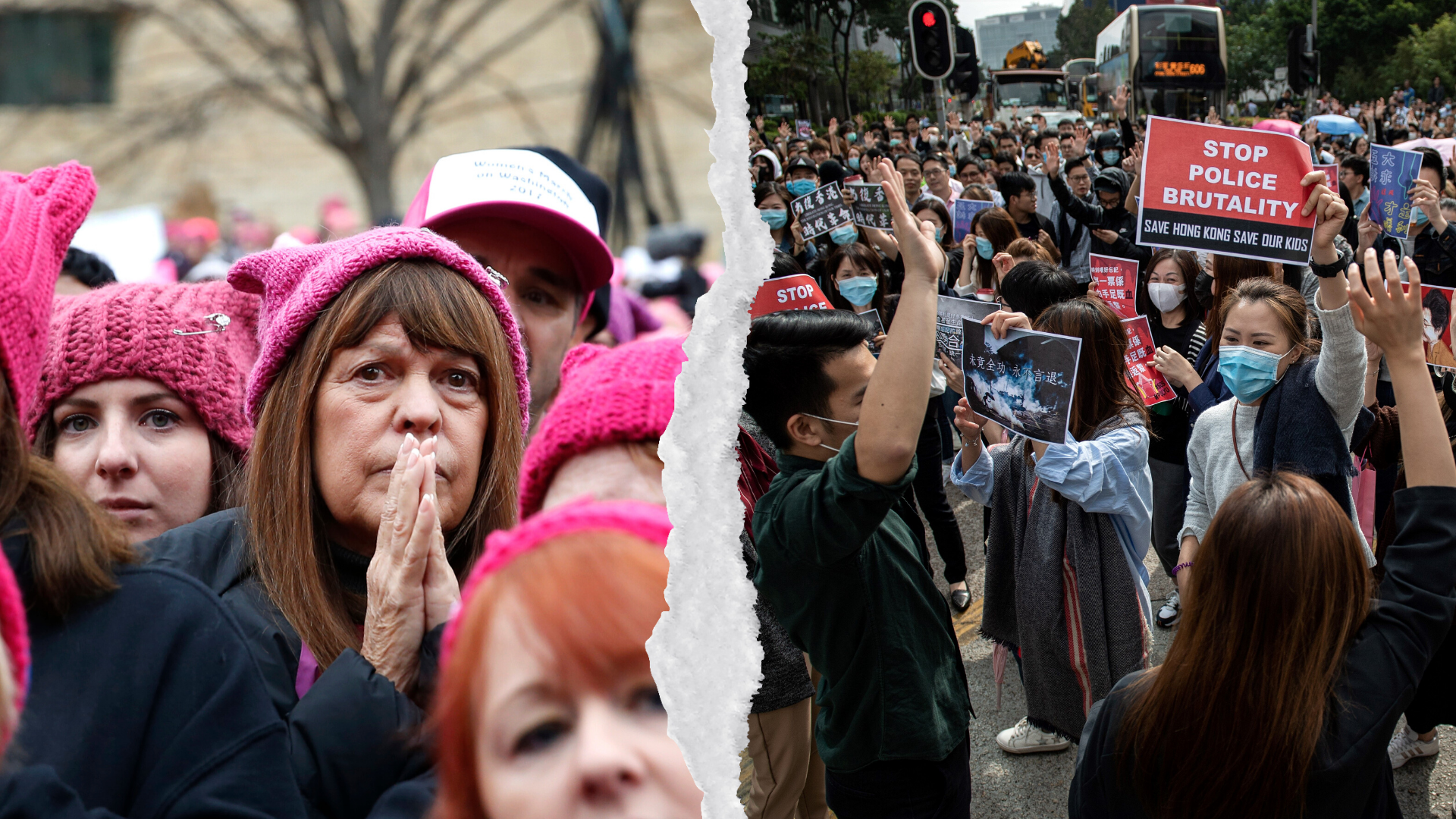The Women’s March Just Compared Itself to…the Hong Kong Protests?

Credit to Author: Marie Solis| Date: Wed, 27 Nov 2019 15:48:21 +0000
The Women’s March—whose inaugural demonstration was characterized by a sea of pink pussy hats, celebrity speakers, and pithy signs that said things like “If Hillary was president we’d be at brunch”—is promising to make a much more radical showing next year.
In a Monday email, organizers suggested the 2020 march would follow in the footsteps of recent protests around the globe. “For weeks, people have been asking when Americans will rise up and take to the streets the way that people have in Hong Kong, Puerto Rico, Lebanon, and Chile,” the email reads. “The answer is January 18, 2020.”
The group is referring to anti-capitalist protests like the ones in Hong Kong, where hundreds of thousands of protesters have stormed parliament and cancelled hundreds of flights after a proposed bill threatened to permit extraditions to mainland China, and in Chile, where residents are protesting the country’s austerity politics and demanding a new constitution. Both protests have resulted in multiple deaths. In Puerto Rico, protesters demonstrated outside the governor's mansion around the clock until he announced his resignation inJuly.
As of publication time, the Women’s March had not responded to VICE’s request for comment.
To say that this vision is incongruous with the past three women’s marches is something of an understatement. After the 2017 Women’s March, which came the day after President Donald Trump’s inauguration, some boasted that the mass demonstrations hadn’t seen a single arrest, making it a peaceful—and therefore, the implicit argument was, an exemplary—protest. By contrast, the J20 protests of the day before, which were organized to purposely disrupt Trump’s inauguration, resulted in damaged property and more than 200 arrests on felony riot charges in Washington D.C.
In her book Being Numerous: Essays on Non-Fascist Life, journalist Natasha Lennard warned against enforcing the notion that there are “good” and “bad" protesters, the latter category being the one police assigned to the J20 protesters and used to prosecute them.
“Of course I was pleased no one got arrested, but if you’re congratulating yourself for that, you’re also tacitly condemning the people who got arrested en masse protesting on Inauguration Day,” Lennard told VICE earlier this year. “The desire to be a ‘good’ protester is a dangerous game, because the government will decide who is or isn’t a good or bad protester. We’re better off not to throw each other under the bus because we have slightly different tactics.”
For Lennard, the 2017 Women’s March had been “vast but placid,” much like most marches, which she argues often amount to little more than a “grand parade.” As such, a demonstration like the Women’s March doesn’t have much in common with the anti-fascist protests raging abroad at the moment, which, while organized, are not carefully coordinated with authorities or government officials, who will issue the proper permits. After the 2017 Women’s March, some protesters recalled that police officers cheered them on, or gave them high-fives as they marched through the streets—hardly the sort of reception protesters have been met with in Hong Kong, Puerto Rico, Chile, or Lebanon. Or, for that matter, the sort of treatment people of color, like those who were involved in Black Lives Matter protests, could expect to receive from authorities, as some pointed out at the time.
“A large group of mostly white women wearing knit pink hats is simply not going to be policed in the same way a large group of people of color would be,” HuffPost senior writer Zeba Blay wrote after the 2017 march.
Some of this may owe to the very nature of marches as well, according to Lennard: “March routes are delineated; traffic, while slowed, is smoothly redirected and at the end of the day, traffic and commerce buzzes along as if nothing ever happened,” she writes in her book. “Parades are scheduled… Disruptions, by definition are not. Not every disruption is a riot, but most every riot is a disruption.”
It may be that the Women’s March is ready to adopt a more radical stance. Three members of the organization’s original leadership—Linda Sarsour, Tamika Mallory, and Bob Bland—stepped down from their roles in September, and 17 new board members have risen up in their place. In Monday’s email, one of the organization’s new co-presidents, Isa Noyola, the deputy director of the Transgender Law Center, said that the 2020 Women’s March would involve demonstrators “putting [their] bodies on the line” in a series of actions leading up to the march itself.
“History will remember what we chose to do in the age of Trump and how we demanded accountability from our leaders,” Noyola wrote.
Sign up for our newsletter to get the best of VICE delivered to your inbox daily.
This article originally appeared on VICE US.